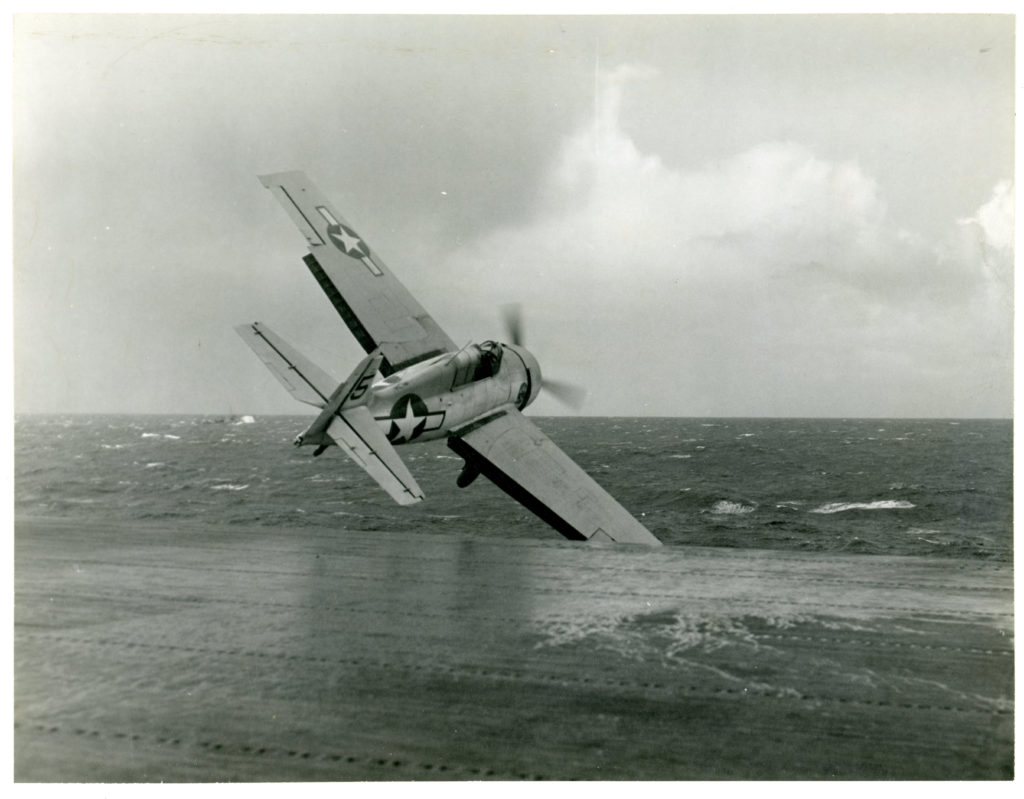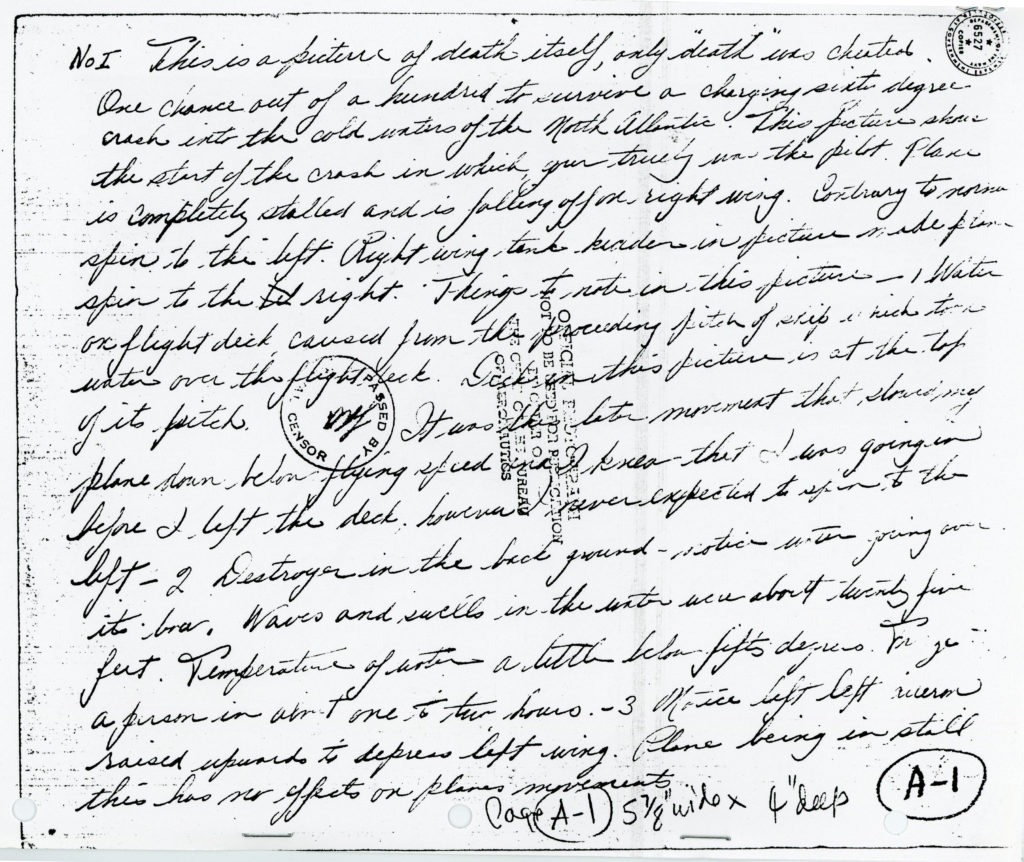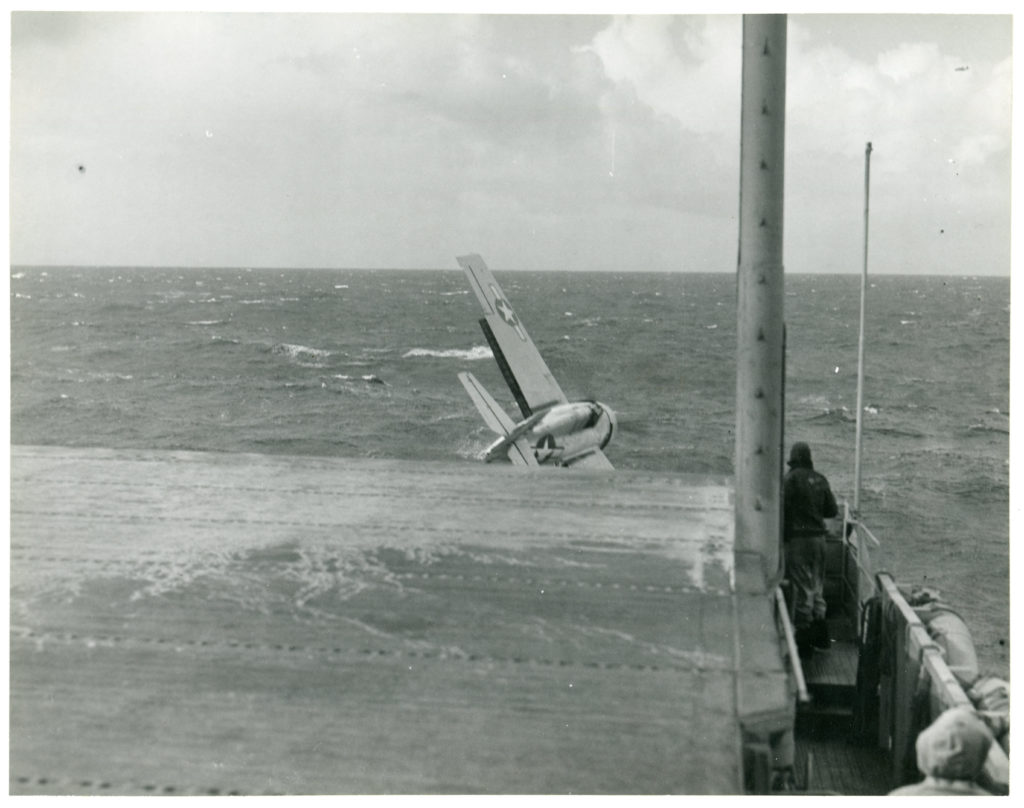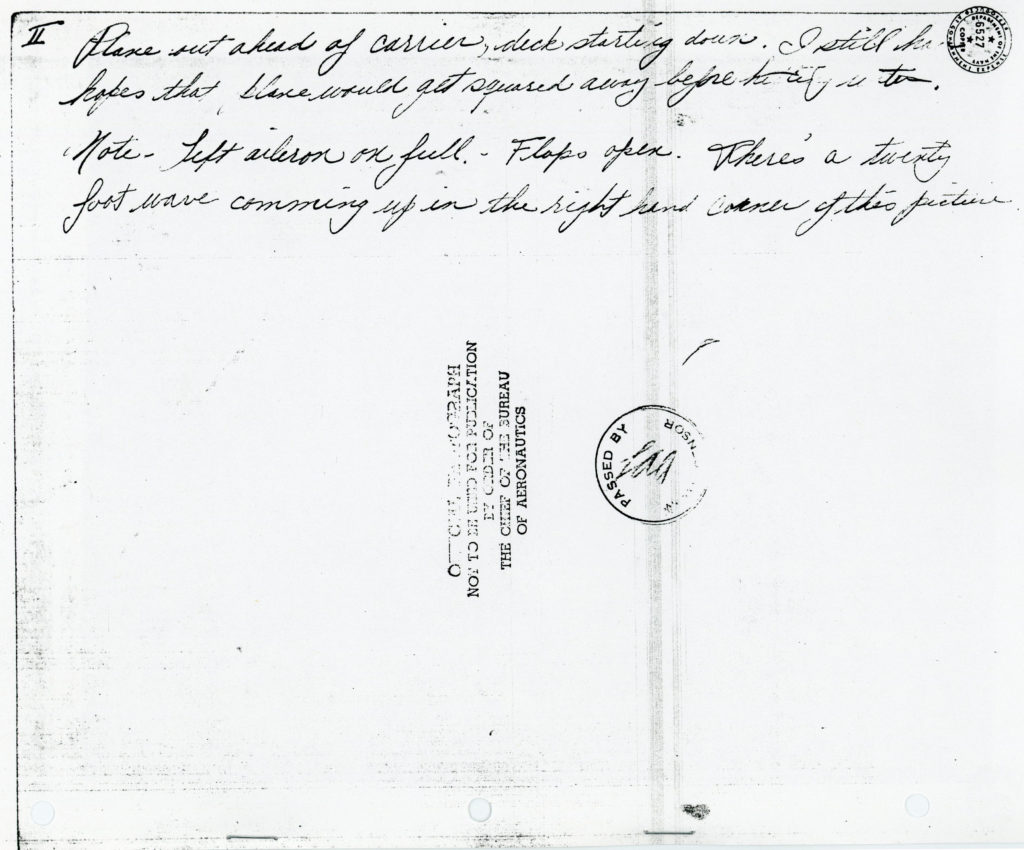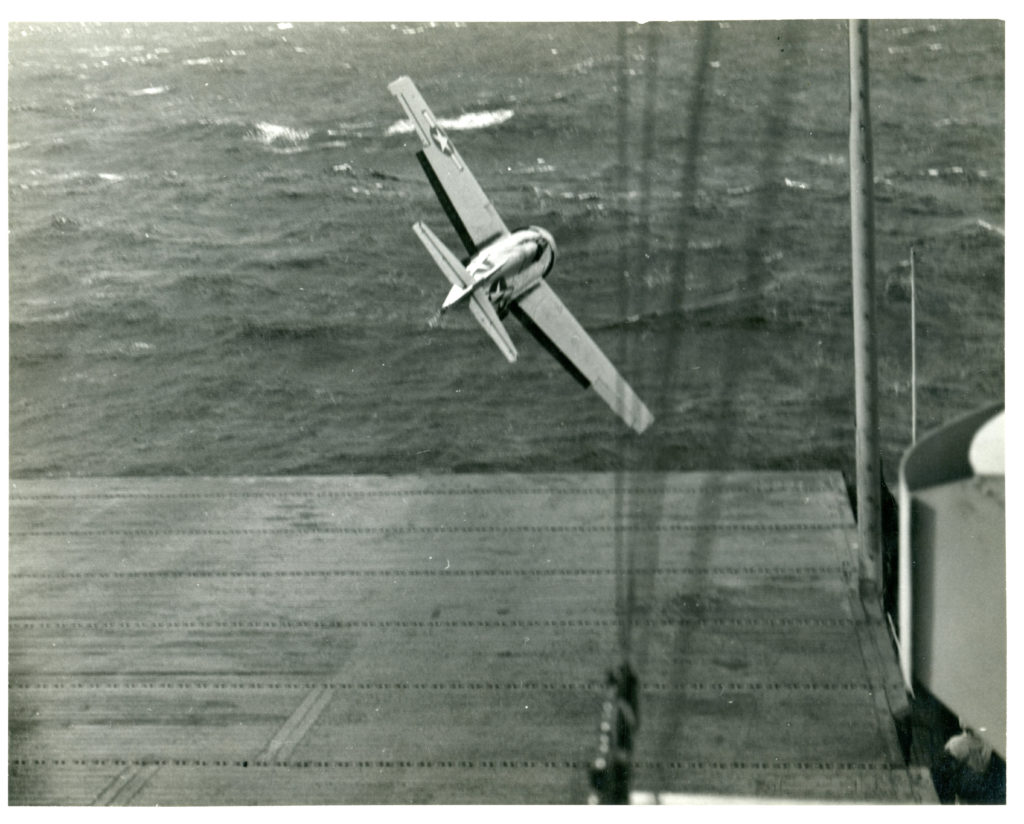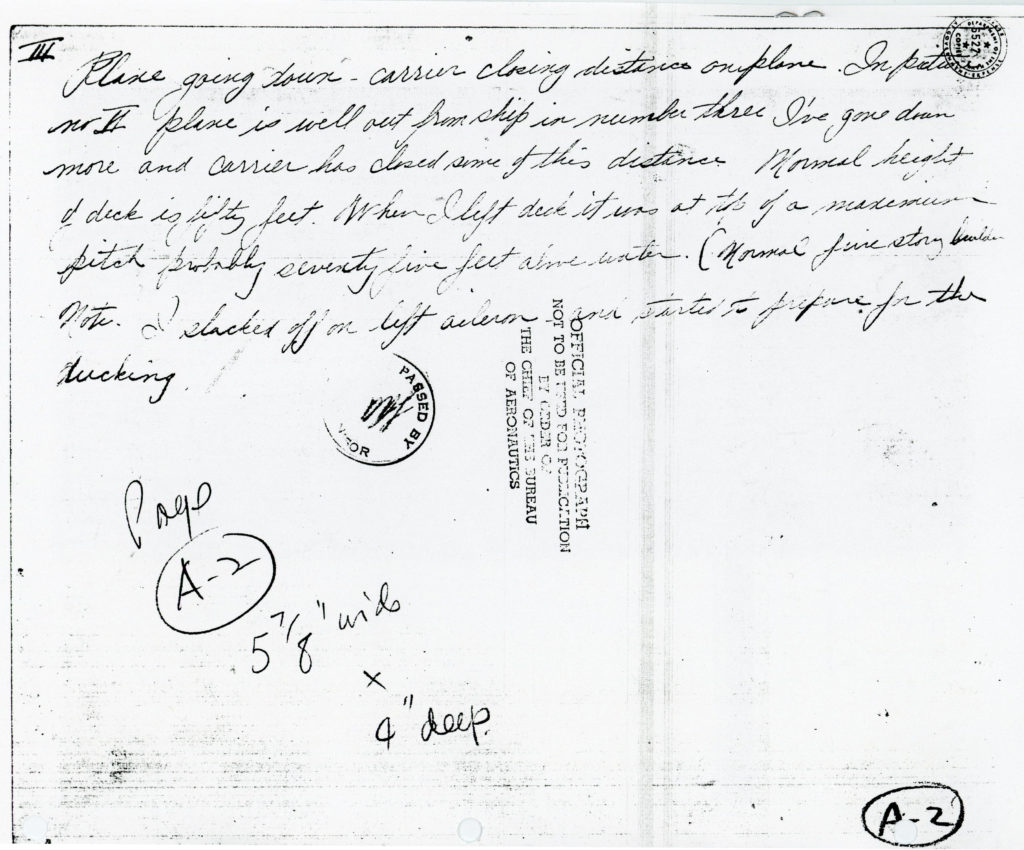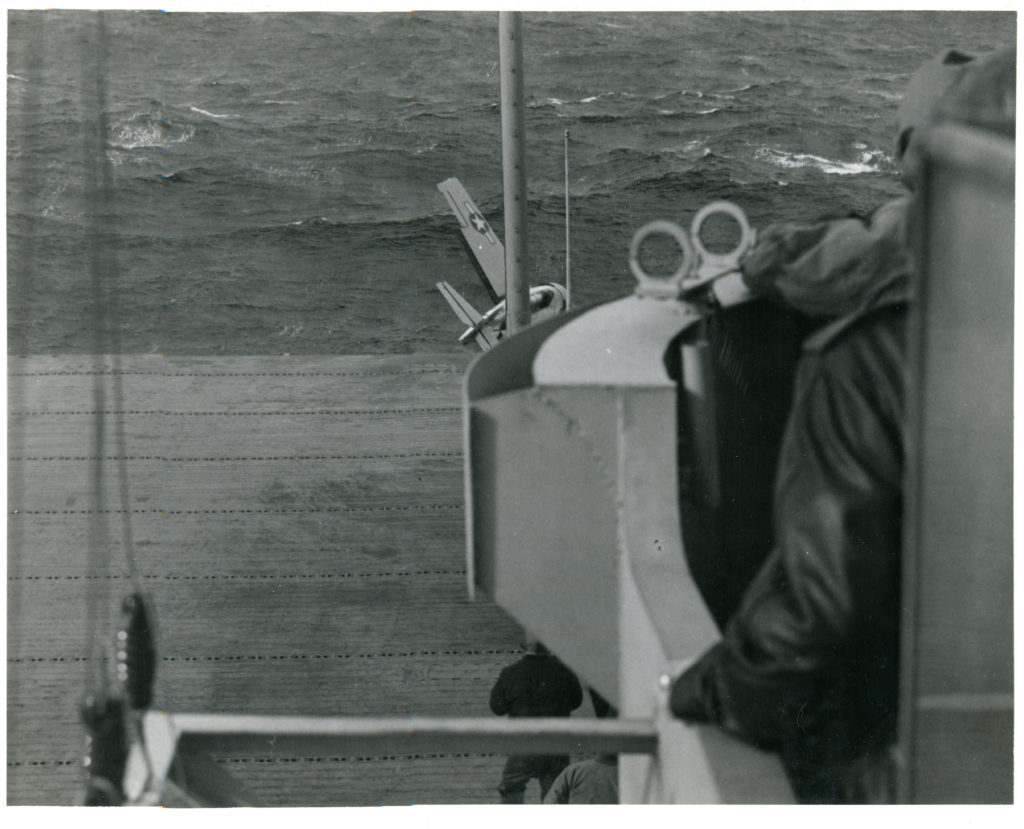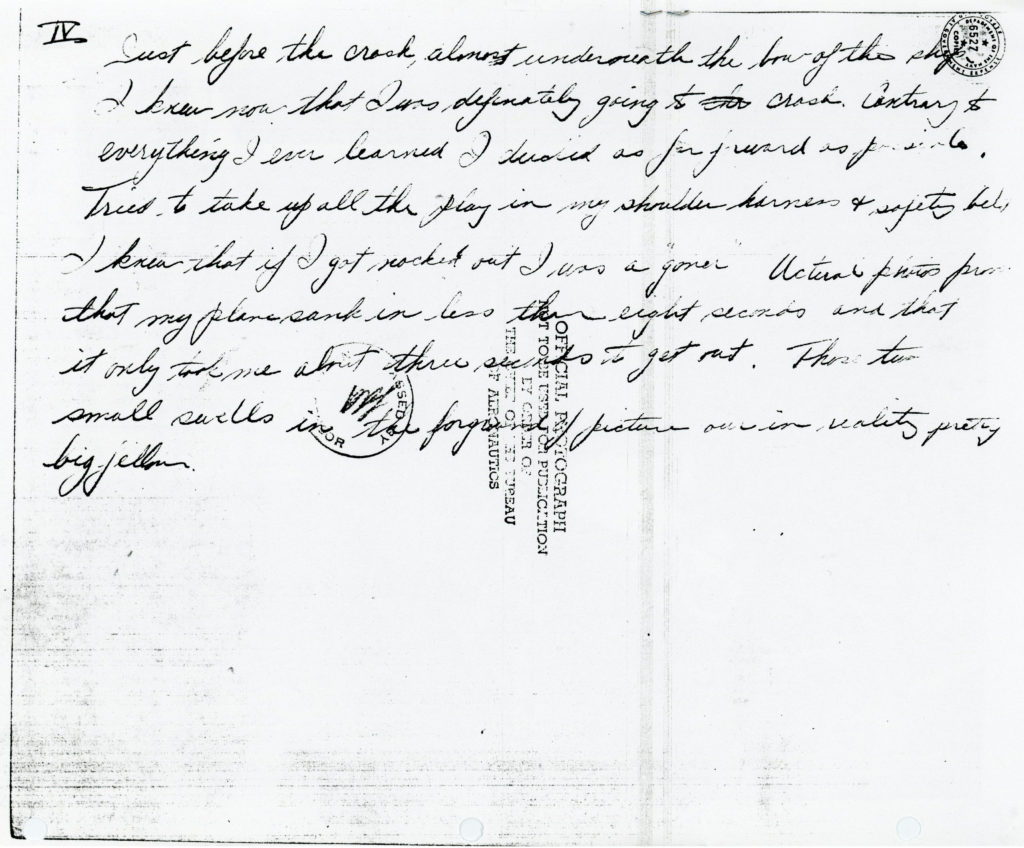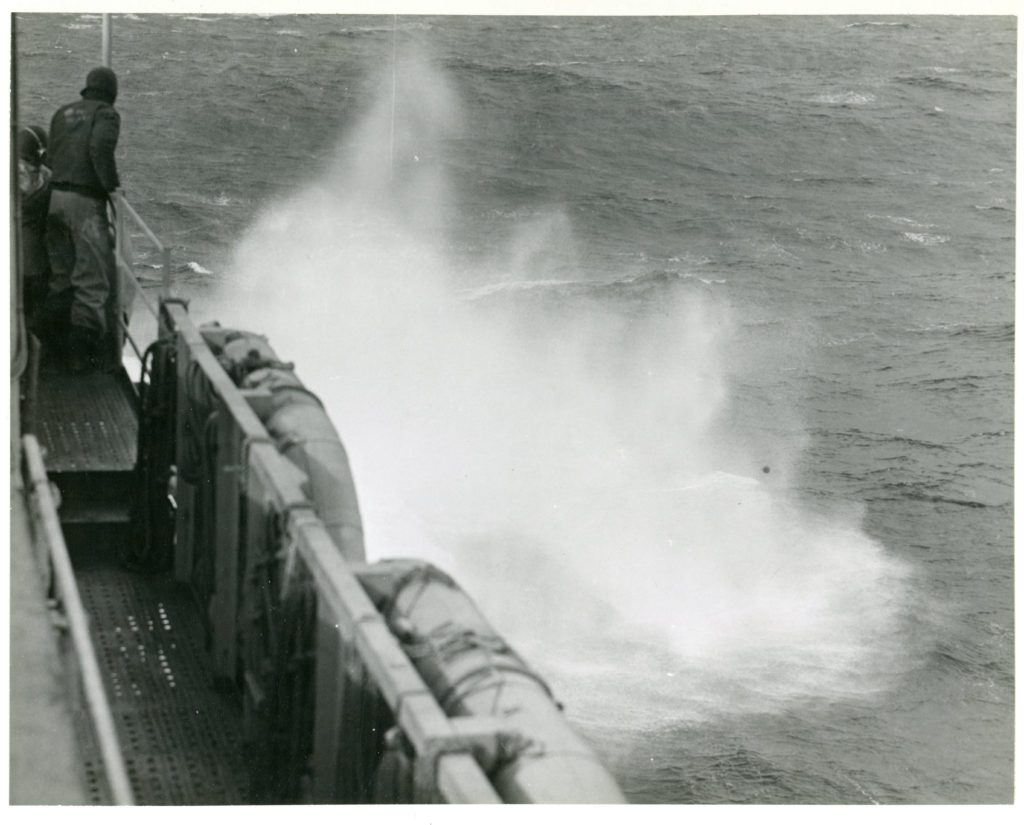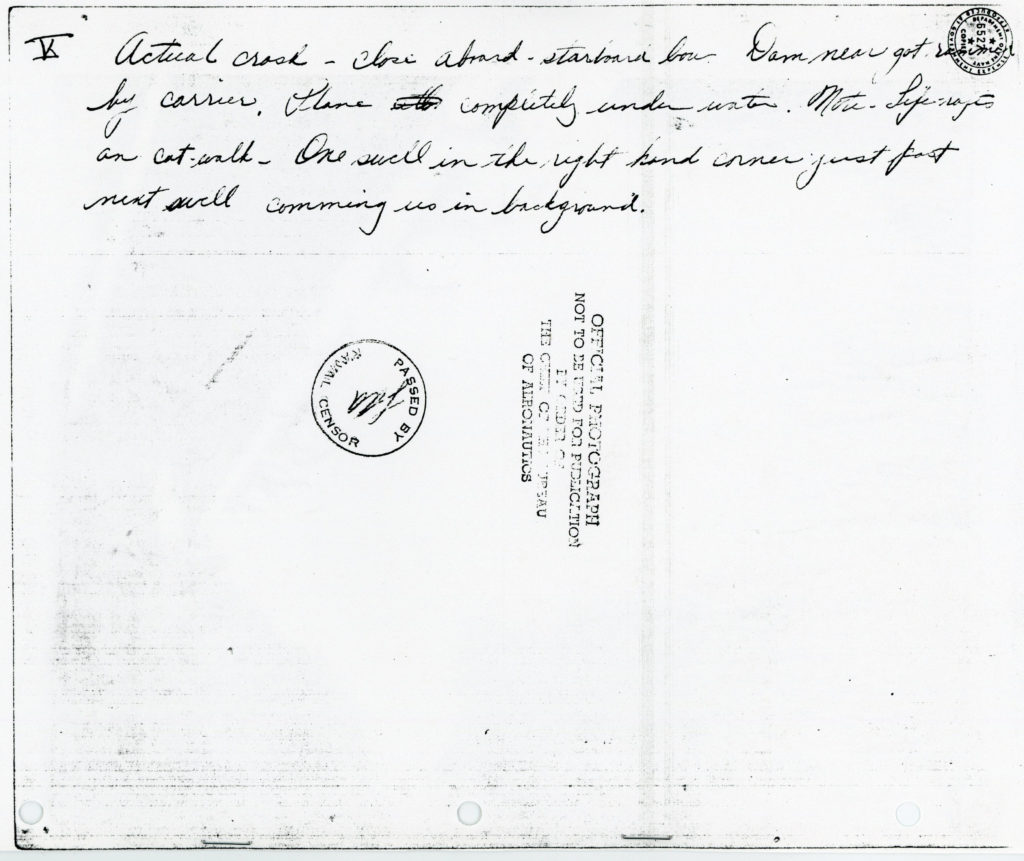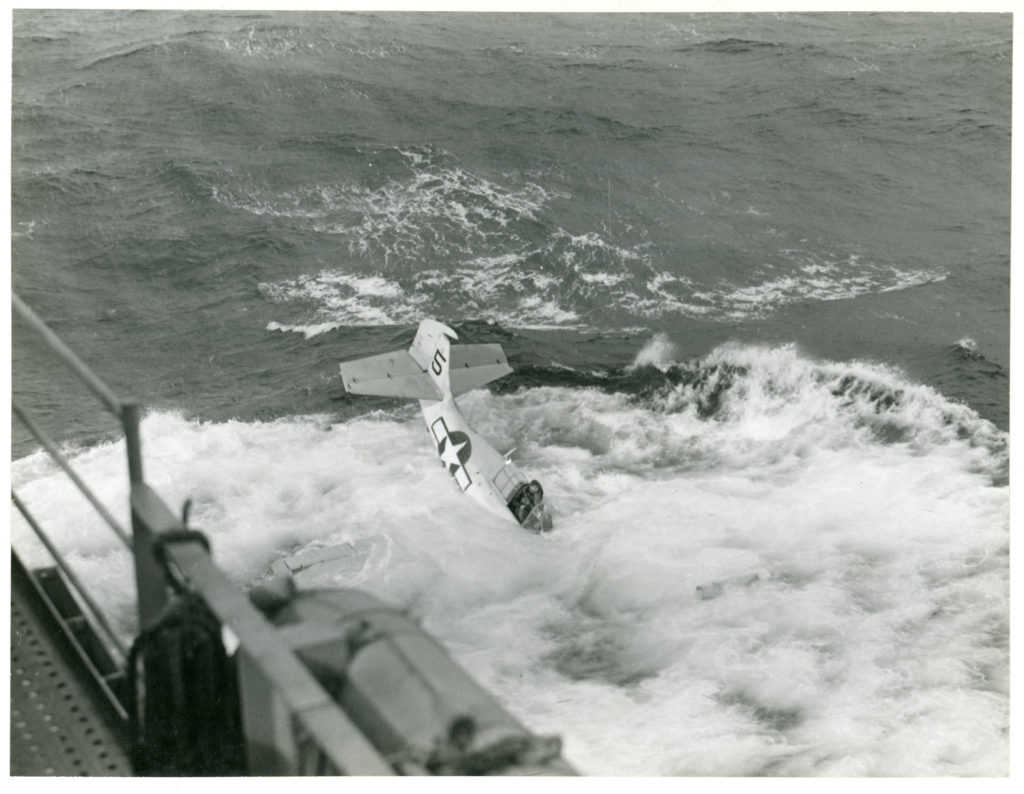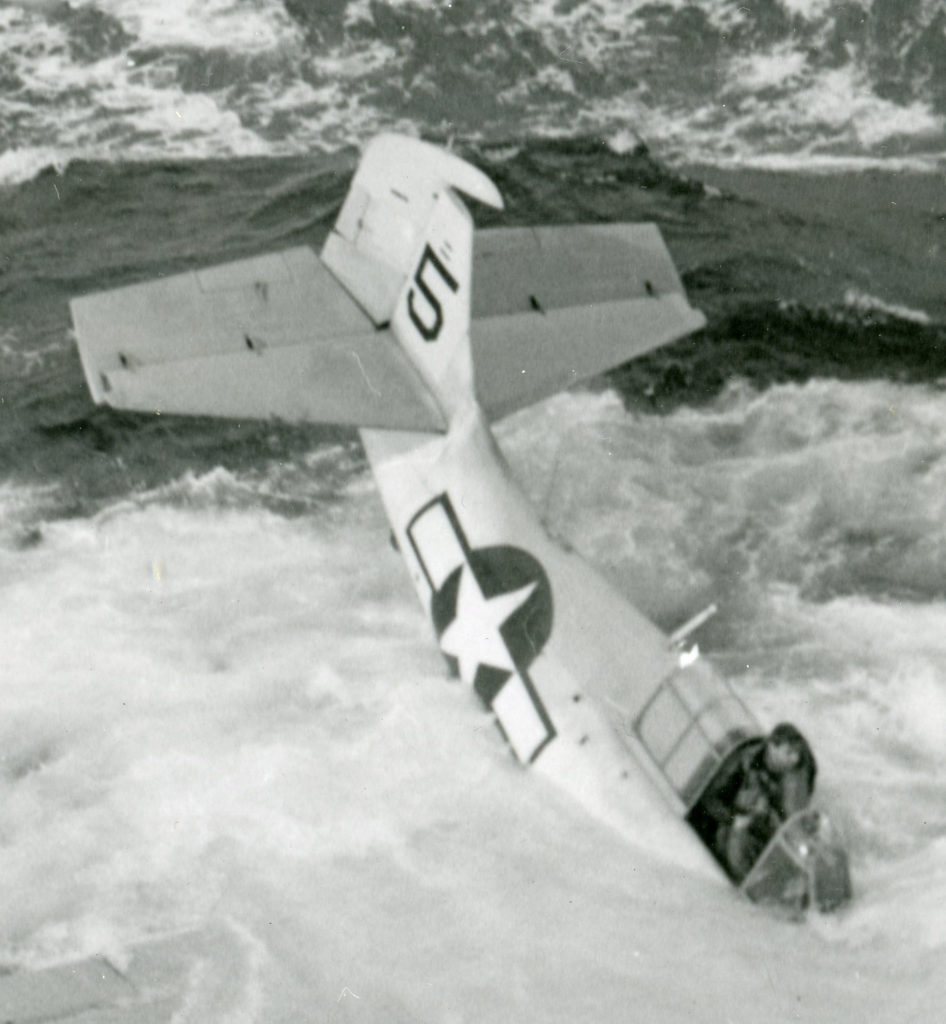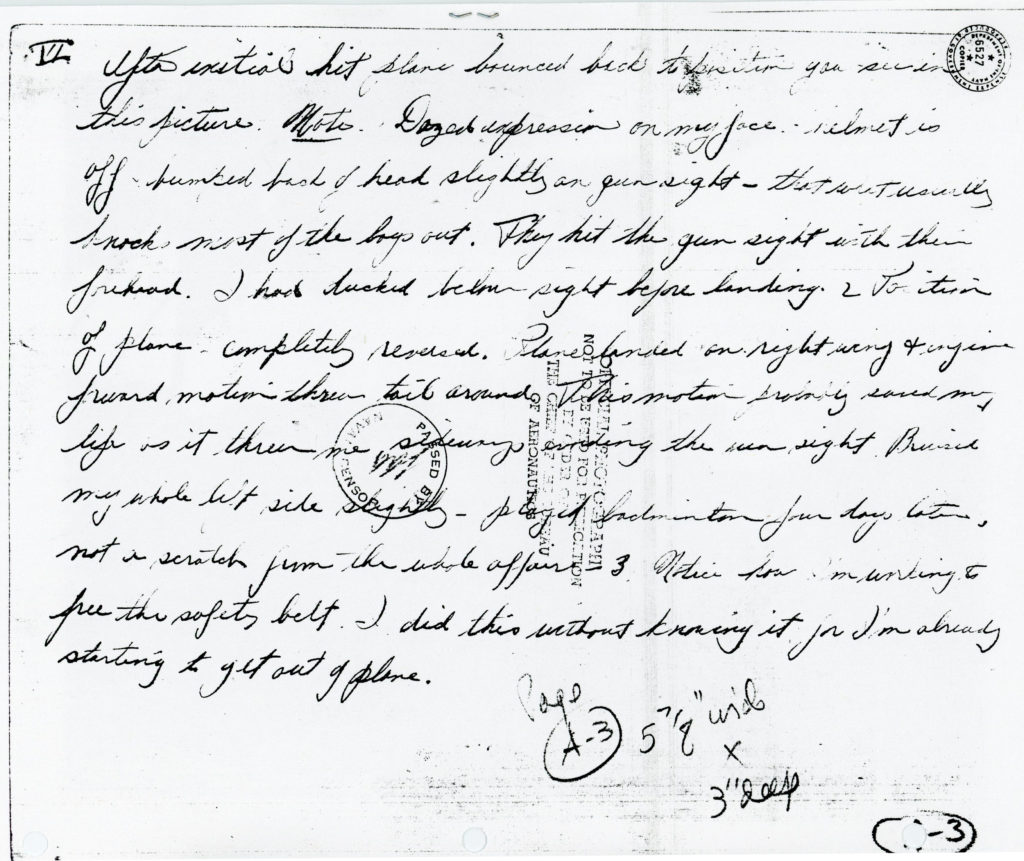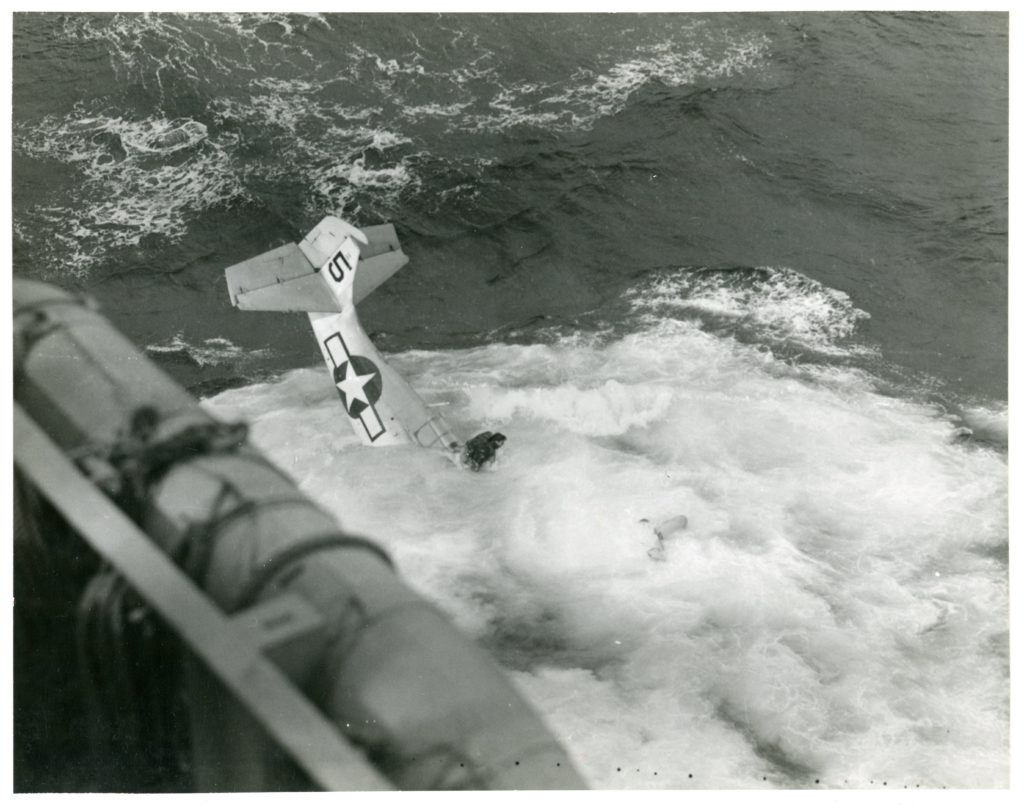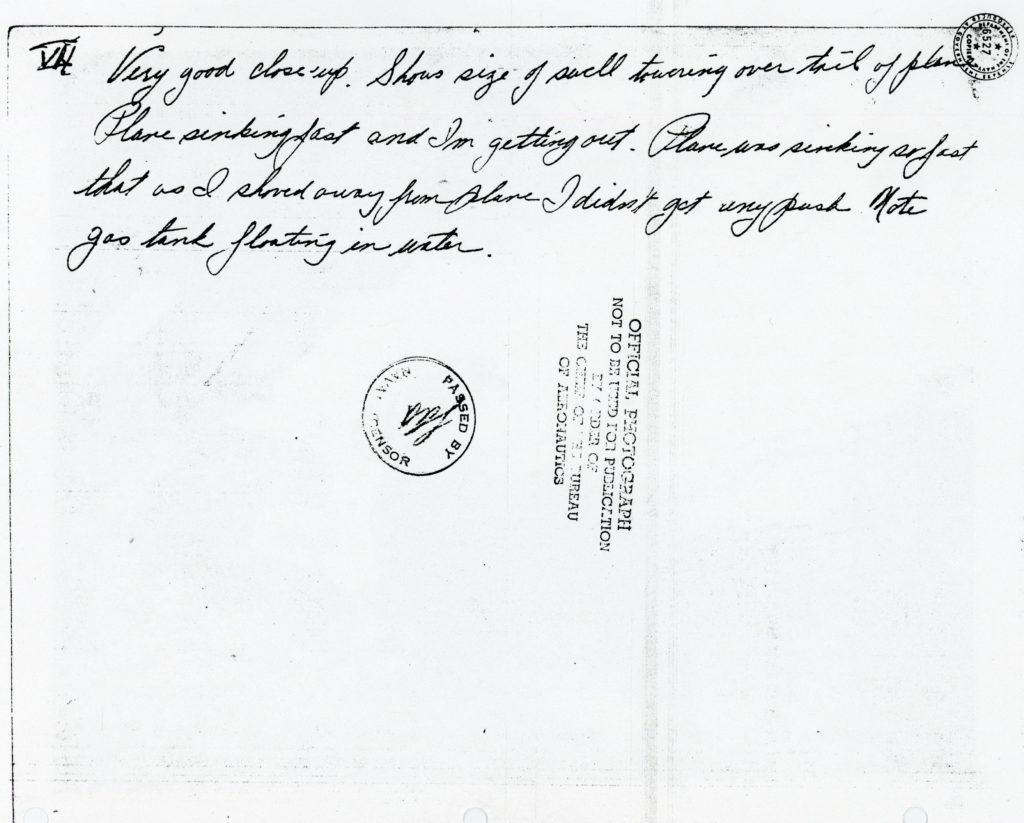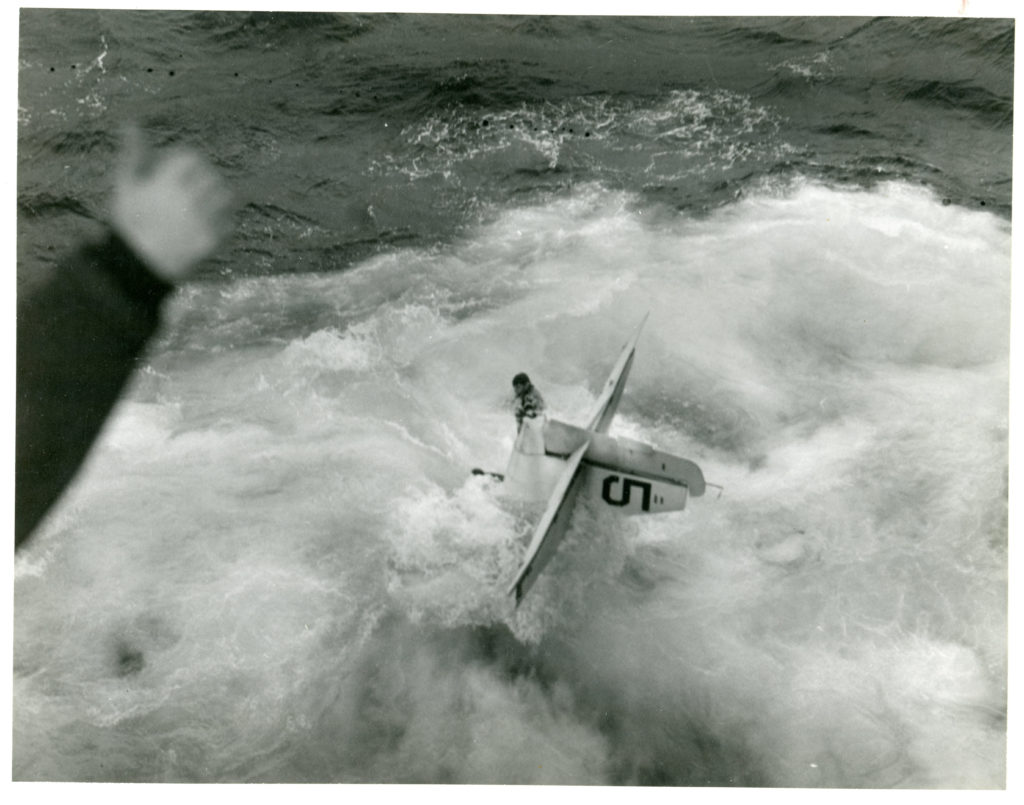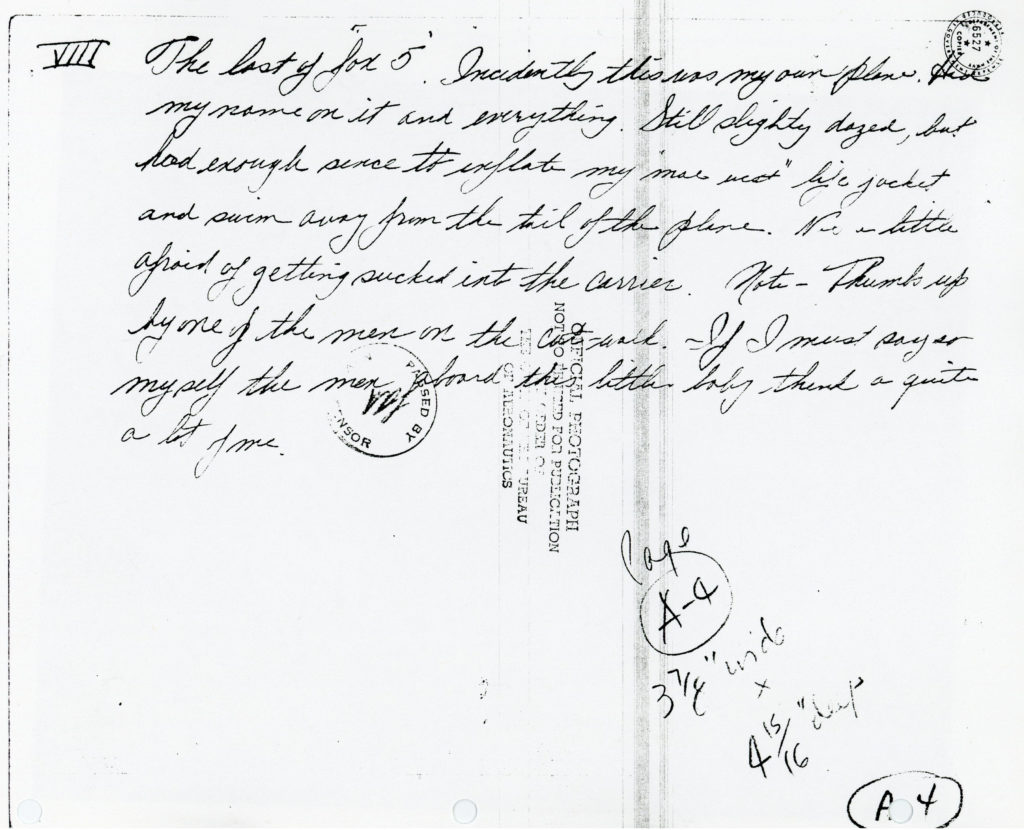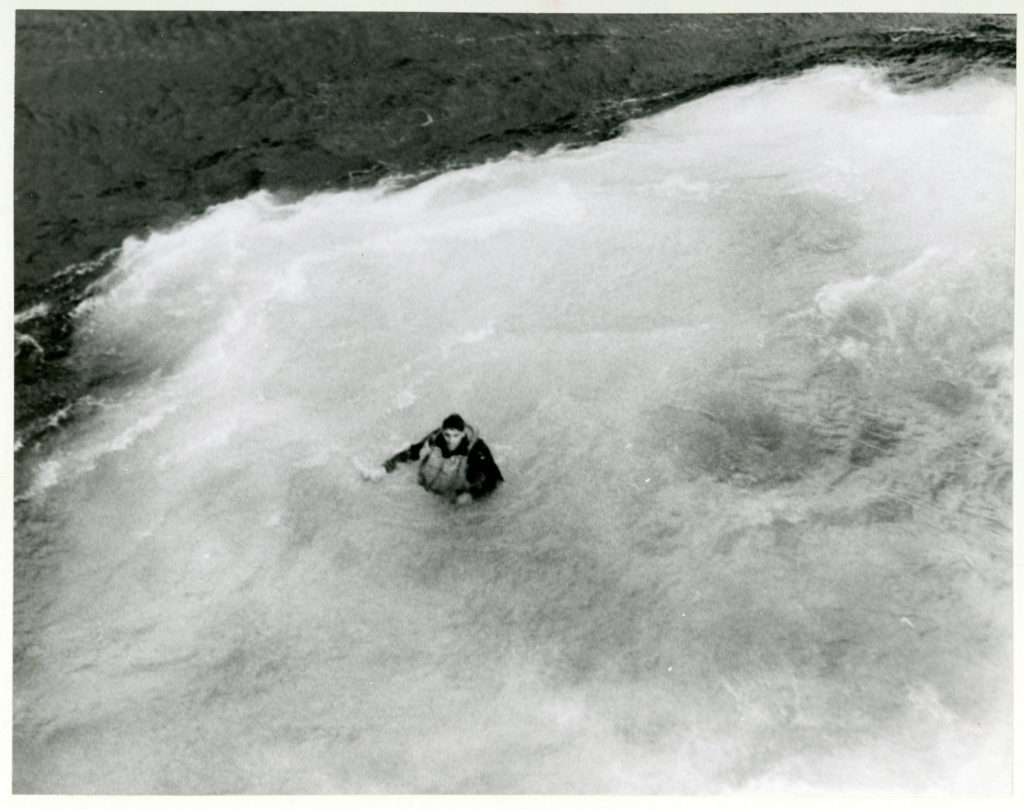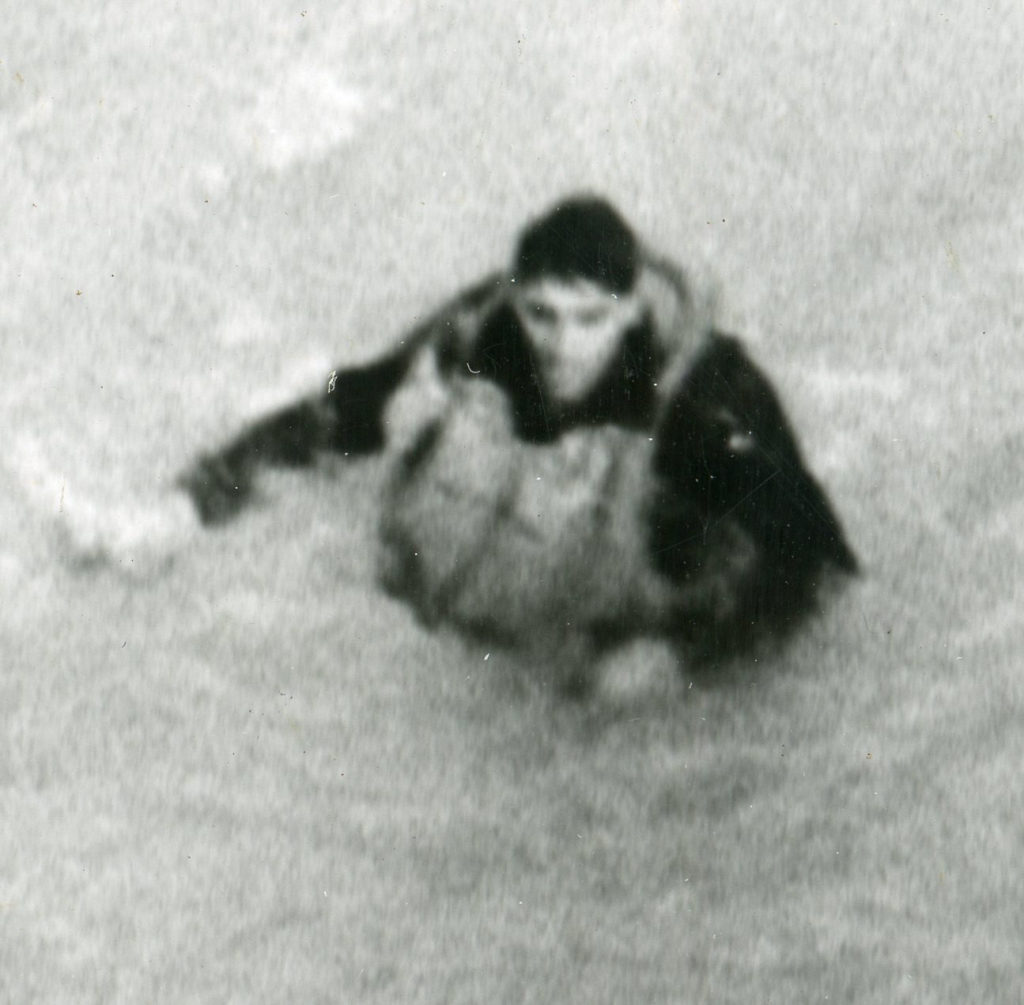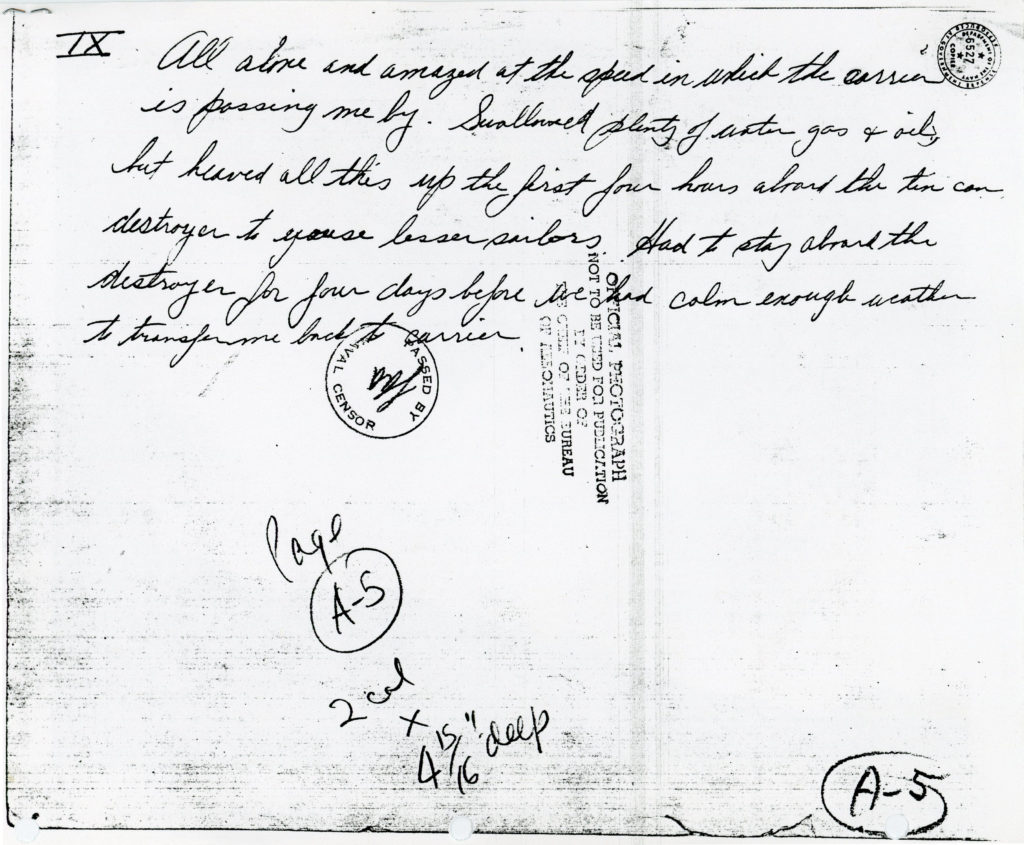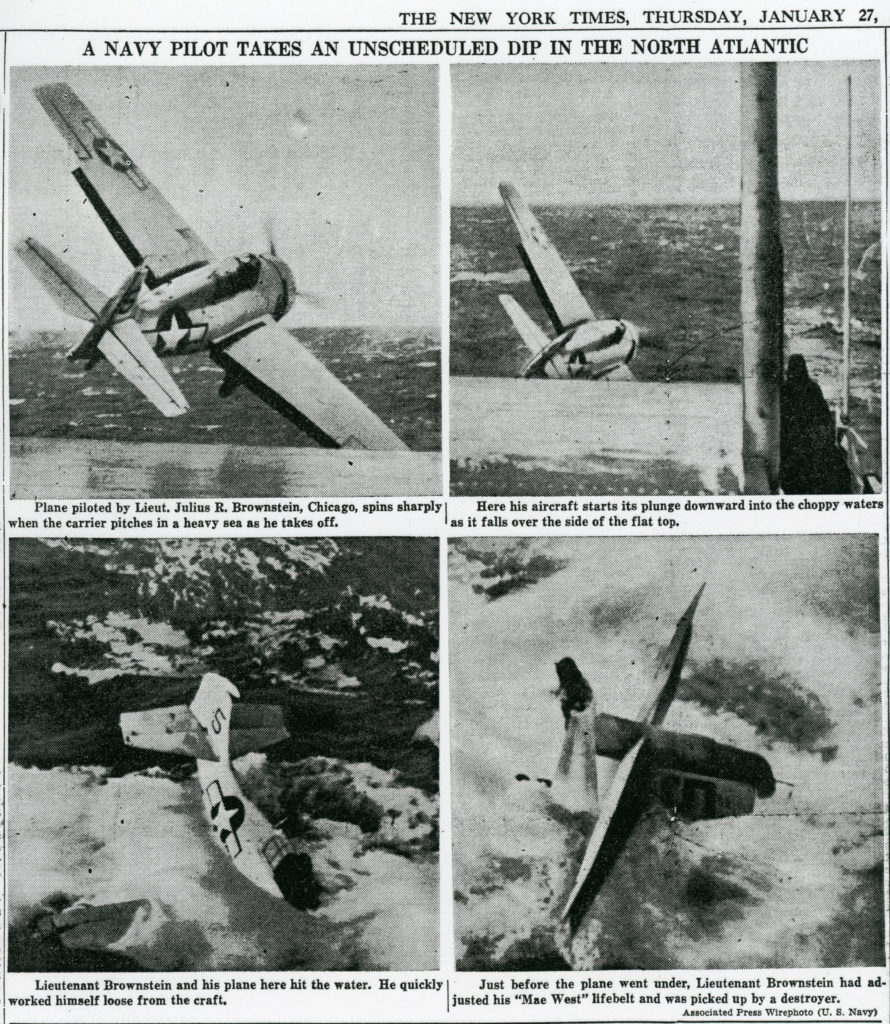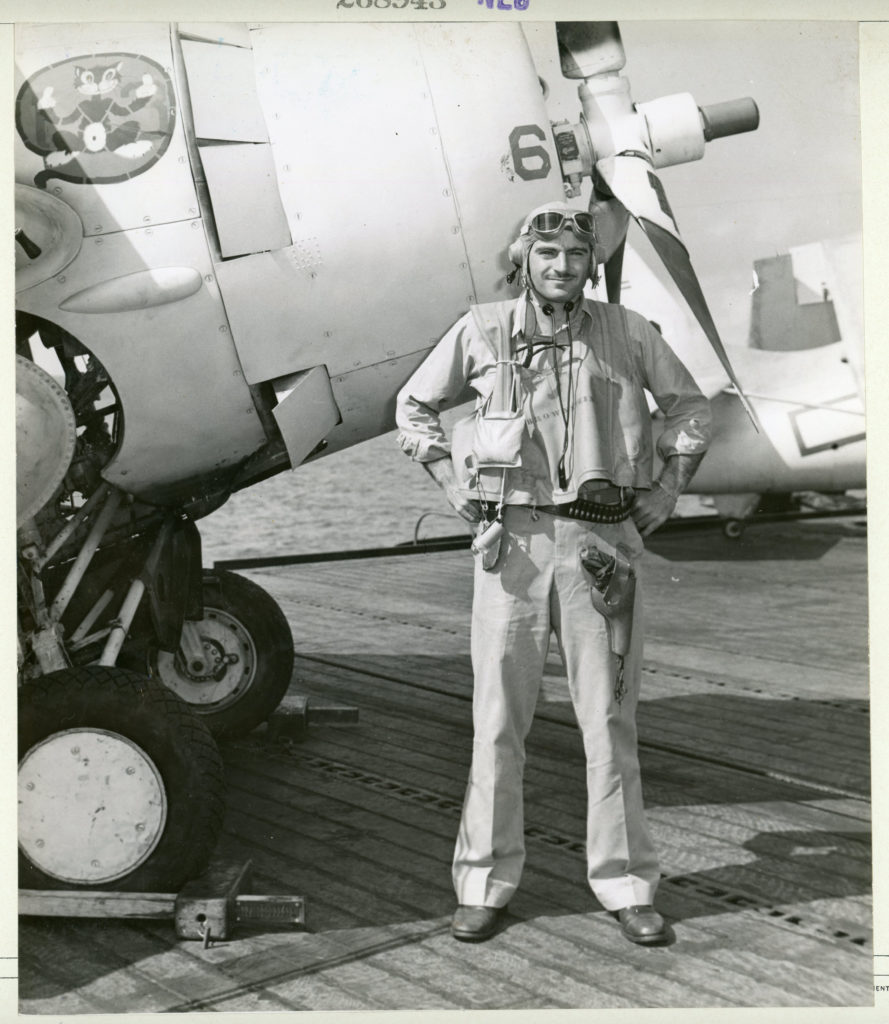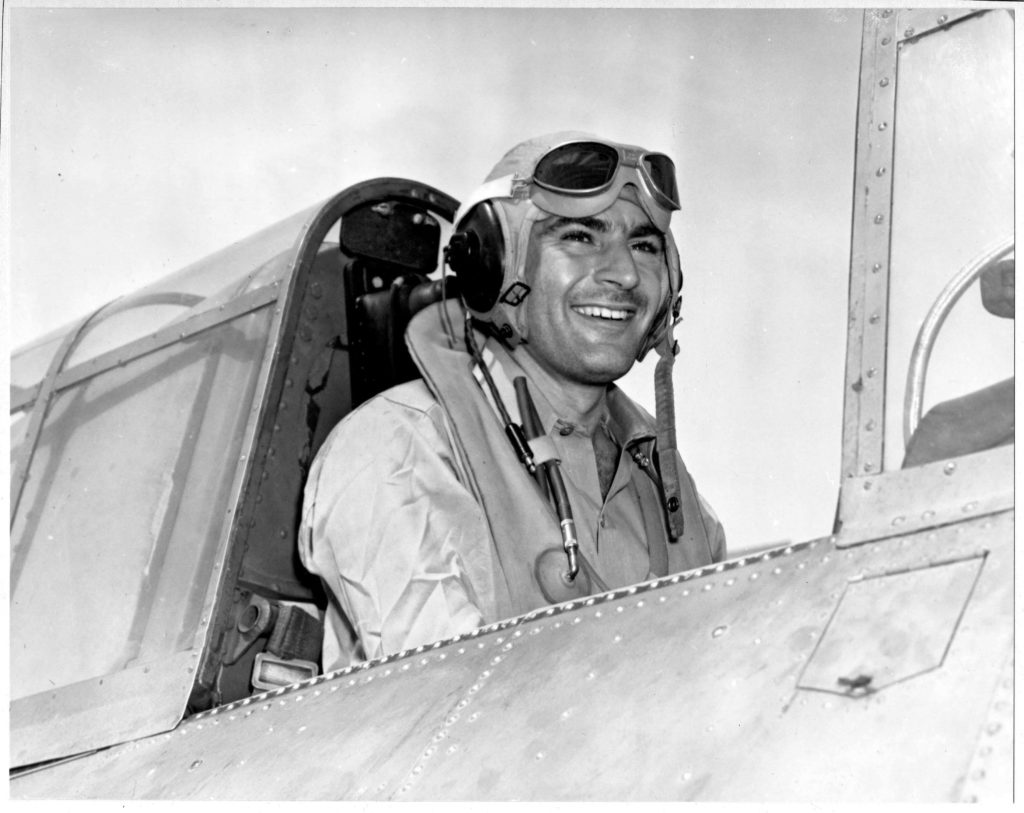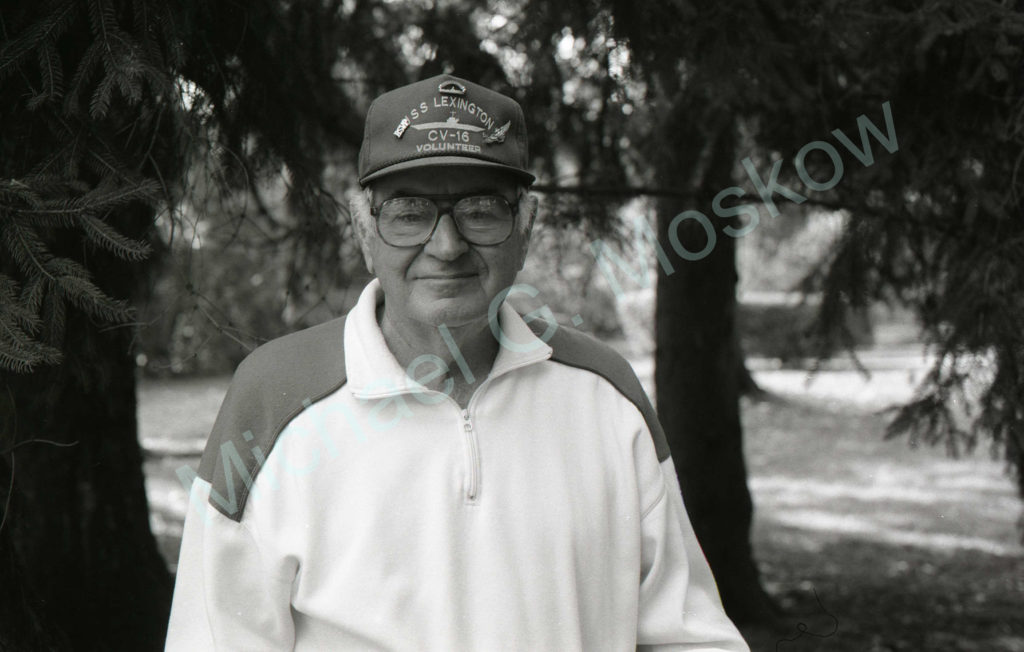Deprecated: Function get_magic_quotes_gpc() is deprecated in /home3/emc2ftl3/public_html/wp-includes/formatting.php on line 4365
Deprecated: Function get_magic_quotes_gpc() is deprecated in /home3/emc2ftl3/public_html/wp-includes/formatting.php on line 4365
Ditching in the North Atlantic:
Julius’ story in sound, photographs, and text.
The photographs in this posting comprise the four images that formed the composite photo that appeared in the Times, and, five other images in the sequence that remained – at the time – unpublished. In the account presented here, below each picture is Julius’ own description of the events shown in that image, transcribed from his notes on the reverse side of the original photograph. A scan of those those same notes accompanies each image.
An excellent photograph of a restored FM-2 Wildcat in the low-visibility Atlantic Theater anti-submarine paint scheme – identical to that carried on Julius’ F4F, and carrying the insignia of VC-13 – can be found at the sim-outhouse website.
And now, the story and the photos:
“This is a picture of death itself, only “death” was cheated. One chance out of a hundred to survive a charging sixty degree crash into the cold waters of the North Atlantic.
This picture shows the start of the crash in which yours truly was the pilot. Plane is completely stalled and is falling off on right wing. Contrary to norm spin to the left. Right wing tank hidden in picture made from spin to the right. Things to note in this picture –
1) Water on flight deck, caused from the proceeding pitch of ship which took water over the flight deck. Deck in this picture is at the top of its pitch. It was this later movement that slowed my plane down below flying speed and I knew that I was going in before I left the deck, however I never expected to spin to the left.
2) Destroyer in the back ground – notice water going over its bow. Waves and swells in the water were about twenty-five feet. Temperature of water a little below fifty degrees. Freezing a person in about one to two hours.
3) Notice left wing aileron raised upwards to depress left wing. Plane being in stall this has no effects on plane’s movements.” (Photo: NARA RG 80 G 89619 / CVE 13 / # 409)
* * * * * * * * * *
Plane out ahead of carrier, deck starting down. I still had hopes that plane would get squared away before hitting water.
Note – Left aileron on full. Flaps open. There’s a twenty foot wave coming up in the right hand corner of this picture. (Photo: NARA RG 80 G 89620 / CVE 13 / # 410)
* * * * * * * * * *
Plane going down – carrier closing distance on plane. In picture No. II plane is well out from ship in number three I’ve gone down more and carrier has closed some of this distance. Normal height of deck is fifty feet. When I left deck it was at the top of a maximum pitch – probably seventy five feet above water. (Normal five story building.) Note – I slacked off on left aileron and started to prepare for the ducking. (Photo: NARA RG 80 G 89621 / CVE 13 / # 411)
* * * * * * * * * *
Just before the crash, almost underneath the bow of the ship. I knew now that I was definitely going to crash. Contrary to everything I ever learned I leaned as far forward as possible. Tried to take up all the play in my shoulder harness & safety belt. I knew that if I got socked out I was a “goner”. Actual photos prove that my plane sank in less than eight seconds and that it only took me about three second to get out. Those two small swells in the foreground picture are in reality pretty big fellows. (Photo: NARA RG 80 G 89622 / CVE 13 / # 412)
* * * * * * * * * *
Actual crash – Close aboard – starboard bow. Damn near got rammed by carrier. Plane completely under water. Note life rafts on cat walk – One swell in the eight hand corner just past next swell coming up in background. (Photo: NARA RG 80 G 89623 / CVE 13 / # 413)
* * * * * * * * * *
After initial hit bounced back to position you see in this picture. Note. Dazed expression on my face – helmet is off – bumped back of head slightly on gun sight – that’s what usually knocks most of the boys out. They hit the gun sight with their forehead. I had ducked below sight before landing.
2) Position of plane – completely reversed. Plane landed on right wing & engine forward, motion threw tail around. This motion probably saved my life as it threw me sideways avoiding the gun sight. Bruised my whole left side slightly – played badminton four days later, not a scratch from the whole affair.
3) Notice how I’m working to free the safety belt. I did this without knowing it for I’m already starting to get out of plane. (Photo: NARA RG 80 G 89624 / CVE 13 / # 414; scanned at 800 dpi)
* * * * * * * * * *
Very good close-up. Shows size of swell towering over tail of plane. Plane sinking fast and I’m getting out. Plane was sinking so fast that as I shoved away from plane I didn’t get any push. Note gas tank floating in water. (Photo: NARA RG 80 G 89625 / CVE 13 / # 415)
* * * * * * * * * *
The last of “Fox 5”. Incidentally this was my own plane. Had my name on it and everything. Still slightly dazed, but had enough sense to inflate my “mae west” life jacket and swim away from tail of the plane. Was a little afraid of getting sucked into the carrier. Note – thumbs up by one of the men on the cat-walk. If I must say so myself the men aboard this little baby think quite a lot of me. (Photo: NARA RG 80 G 89626 / CVE 13 / # 416)
* * * * * * * * * *
All alone and amazed at the speed in which the carrier is passing me by. Swallowed plenty of water gas & oil, but heaved all this up the first four hours aboard the tin can destroyer to amuse lesser sailors. Had to stay aboard the destroyer for four days before we had calm enough weather to transfer me back to carrier. (Photo: NARA RG 80 G 89627 / CVE 13 / # 417; scanned at 800 dpi)
* * * * * * * * * *
The original photos were lost…
